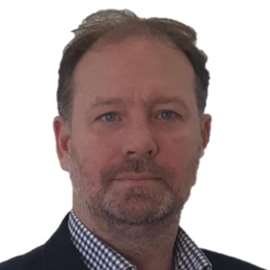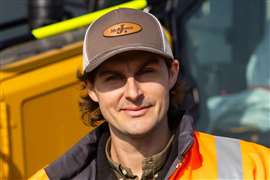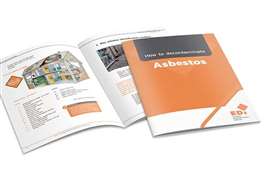How digital tools and AI are revolutionising site cleanups
12 November 2025
Managing complex environmental liabilities has never been more challenging. Legacy contaminants such as PFAS, hydrocarbons, and heavy metals are increasingly shaping the way industries approach demolition, remediation, and recycling.
 The Iridesense device produces a map image that identifies areas of hydrocarbon pollutants. Photo: Iridesense
The Iridesense device produces a map image that identifies areas of hydrocarbon pollutants. Photo: Iridesense
For companies tasked with cleaning up industrial sites or repurposing brownfields, the challenge is as much strategic as it is technical: how to comply with regulations, mitigate corporate risk, and deliver sustainable outcomes for communities and ecosystems.
For Truong Mai, Global Service Lead for multinational consulting firm ERM that specialises in sustainability, the importance of a proactive and holistic approach is essential. “PFAS has become much more prominent over the past decade,” he says.
“While we treat it like any other contaminant, there’s a newness factor that involves more exploration and litigation.
“We also consider it through a corporate risk lens: supporting a PFAS manufacturer is very different from working with a company that uses PFAS in consumer products.”
Mai says that the most effective strategies start with clarity. “Helping clients define how they want to approach potential exposures and how that fits with their business plan is critical. That clarity at the start dictates the tactics that follow.”
Equally important is proactivity. Companies that address issues early tend to see far more positive outcomes than those that wait until they are compelled to act.
Digital tools in remediation
Digital tools have become increasingly central to this approach. Large remediation projects generate vast volumes of structured and unstructured — analytical, geochemical, physical, etc, and managing it efficiently can mean the difference between delays and smooth project execution.
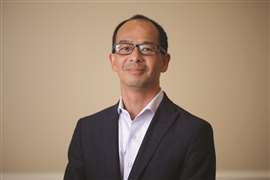 Truong Mai, Global Service Lead for multinational consulting firm ERM. Photo: ERM
Truong Mai, Global Service Lead for multinational consulting firm ERM. Photo: ERM
Mai explains: “It’s critical, and it’s a journey rather than a destination. We generate huge volumes of structured and unstructured data and have spent years automating data management processes, improving data quality and security, and reducing manual work.
“A single data management approach and platform now ensures consistency, efficiency and cyber security for our 1,400 consultants. Clients expect the same quality whether they are in Asia, Latin America, North America, or Europe.”
AI is also playing a role, acting as a knowledge-sharing “answer machine” that helps consultants access collective expertise across the network.
Looking ahead, automation of recurring processes promises further gains for both clients and service providers.
The importance of soil assessment
While AI and data platforms optimise decision-making, hardware innovation is also transforming remediation.
French start-up Iridesense, in collaboration with Bouygues subsidiary Colas Environnement, is developing a multispectral LiDAR device capable of detecting hydrocarbon traces in soil from distances of up to 100m.
The device uses laser scanning and AI to generate 3D maps that highlight contaminated areas in real time. Traditional soil assessment relies on physical sampling and laboratory analysis, a process that can disrupt project timelines.
Iridesense’s technology promises immediate on-site results, reducing delays and costs while improving accuracy.
Pilot tests have demonstrated that it can detect contamination levels above 500 mg/kg of dry mass, and the device operates under any weather or lighting conditions.
Compact and portable, it can be deployed quickly on site, providing high-resolution maps accurate to 10 sqcm.
“Although still in the evaluation phase, we see potential in this technology to enhance the efficiancy and sustainability of our soil remediation projects,” says Arnault Perrault of Colas Environnement.
Iridesense co-founder Nadine Buard adds: “We are working to refine the multispectral LiDAR to better meet industry needs and advance the rehabilitation of contaminated sites.”
Sustainability and remediation
Meanwhile, sustainability is no longer an add-on; it drives decisions from the earliest stages of remediation, and Mai notes that the selection of the remedy itself has the greatest impact. “The chosen remedy has the greatest impact on sustainability. For example, is it better to dig and landfill material, or can risks be managed through in-situ or nature-based remedies that add value to ecosystems and communities?
“Stakeholders are becoming more receptive to these alternatives where they are effective and economically viable.”
Beyond the technical choice of a remedy, other factors shape sustainable outcomes such as supply chain management, local sourcing, renewable energy, climate resilience, and community engagement.
Reuse strategies are evolving too. Clients are considering options such as adding green space, supporting biodiversity, or developing land for renewable energy, rather than simply building the next high-rise.
“It’s less about the shiny new development and more about the most valuable reuse for the community and environment,” Mai adds.
Regional shifts
Operating across multiple geographies also adds another layer of complexity for companies. “Global themes exist, but local nuance is crucial,” Mai explains.
“What’s possible in the US or UK may not be in Chile. What matters to First Nations in Canada may differ from indigenous populations in Brazil. Our experience across regions helps us tailor solutions to each location, industry, and client. An oil refinery has common technical challenges worldwide, but how it operates within its local community can vary dramatically.”
This tailored approach is increasingly vital as industries face cost pressures.
By combining global advisory insight with solutions ranging from AI-driven data platforms to multispectral sensors, companies can tackle complex liabilities efficiently while supporting sustainable outcomes for communities and ecosystems.
Mai observes: “The integration of advisory insight with digital and sensor technologies is creating a new paradigm in remediation — one that’s smarter, greener, and more accountable.”
Cleaner recycling
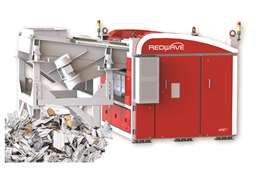 Photo: Redwave
Photo: Redwave
BT-Systems GmbH, has developed Redwave XRF, which combines X-ray fluorescence with spectral analysis to distinguish individual aluminium alloys even in soiled or mixed streams.
The company says this boosts material purity, reduces contamination, and increases market value — particularly for automotive and construction.
By ensuring hazardous fractions, including PFAS-containing materials, are identified and managed, Redwave adds that it is helping the recycling chain contribute to the circular economy while supporting sustainability goals.
CONNECT WITH THE TEAM

